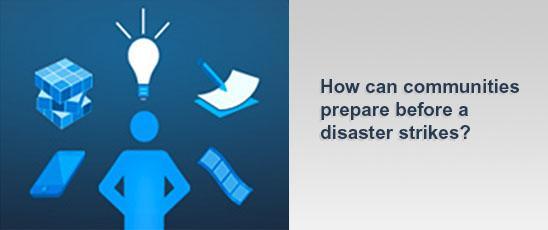Posted by: Rachel Racusen, Director, Public AffairsWith severe snow storms making all the headlines, many of you may be wondering where FEMA’s role comes into play? Here’s an overview of what our role is when winter weather rolls in.
Before a stormBefore a winter storm or extreme cold front, we’re all about preparedness. If you follow FEMA on
Twitter or
Facebook, or visit
fema.gov on a regular basis, chances are you’ve seen messages on the importance of being
prepared before a winter storm.
We obviously can’t stop the forces of Mother Nature, but we can all play a part in limiting the personal effects of severe weather. And as soon as a storm is forecast to hit a certain area, our regional offices and watch centers will begin communicating with our state and local partners -- those who will be the first to handle the response efforts -- to make sure they have everything they need to prepare.
During a stormIf a severe winter storm seems imminent,
our regional offices and watch centers will continue to stay in constant contact with other members of the emergency management team (including state and local governments, non-profit and faith-based organizations).
Our partners at the National Weather Service forecast office also play an important role in providing the most up-to-date weather information.
After a stormAfter the storm, a state governor can request financial assistance to help with the costs incurred during snow removal. The process for requesting snow removal reimbursement is the same as a state requesting a major disaster declaration, as specified by
the Stafford Act:
- A governor seeks a presidential declaration by submitting a written request to the President
- FEMA reviews the governor’s request for assistance and evaluates it based on several objective standards
- FEMA provides the President with a recommended course of action
With a major disaster declaration, the types of assistance that may be provided in response to a declared snowstorm could include providing grants to individuals with uninsured, disaster-related losses and providing states with at least 75 percent reimbursement for the costs of debris removal and permanent restoration of facilities, as warranted.
In order to receive reimbursement for snow removal costs, each of the counties included in the Governor’s request for a declaration must have record or near record snowfall within a 48-hour period, and also meet other criteria described in the
Snow Assistance Policy.
This all is just a minimum. There are other ways we offer support to states throughout winter events -- including deploying liaisons and teams on the ground to work closely with state officials. We deploy these liaisons and
Incident Management Assistance Teams (or "IMAT" teams) at the request of the states, to help with coordination. For example, in anticipation of the storms in New England this weekend, we deployed a liaison to the Massachusetts emergency operations center to support in these areas.
But as you all know -- we're just part of the team when it comes to dealing with winter storms and weather. What role can you play to help your family/community prepare for and respond to winter storms? Leave a comment and let us know how you can be part of the team.
- Rachel
Other LinksRead FEMA’s complete
Snow Assistance Policy.
Prepare for winter storms on
Ready.gov.




